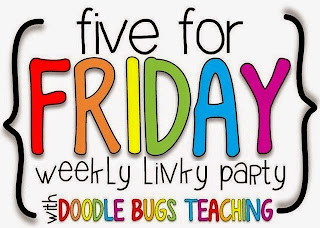Introduction/Review- What is Main Idea?
I used a small paragraph about new puppies to model how to find the main idea. First, I have my students identify and box the topic: What is a word or phrase that sums up what we just read? In our case it was PUPPIES. Then, I have them think about a few things. What information is presented? Why did the author write this? What's the point? The so what about our topic. We then take that information and write a sentence about what we just read. If we write a good main idea sentence, we should be able to chose almost any detail in the text to support it. However, we talk about the difference between details and KEY supporting details (We use the ever popular table analogy because it works so well). Details are the legs that hold up the table top- main idea. You want to make sure your details are strong and supportive, other wise your table might not be able to hold weight that you put on it.
Students worked in small groups with short paragraphs to practice what I just modeled. They loved getting to use our anchor chart paper to record their thinking. Above is a photo from a small group identifying the topic, main idea, and a key supporting detail.
Continuing Practice: Practice Makes Perfect
Over the next several days we read stories from our Journey's book (Young Thomas Edison) and Read Works' passages to continue practicing identifying the main idea and details. We learned all sorts of new tricks. Some of my struggling readers have difficulties nailing down the topic and main idea, so we use highlighters and look for repeated words or phrases and examine text features. Other strategies we learned were jotting down summarizing notes after sections in a longer passage or text.
Of course we created anchor charts! I loved this tool from The Applicious Teacher. This interactive anchor chart freebie is a great resource. We used it throughout the week and just removed the post it notes when we were ready for the next one.
After we finished Young Thomas Edison, students worked with their partner of the week to create a main idea web that identifies not only the main idea but also three key details that they feel best support the main idea. Partners then traded their main idea webs and critiqued each other's work. They used the "I noticed and I wondered.." strategy. Its important for students to learn from each other. This is a great way to make it happen!
Integrating Technology
Lastly, we used computer time and small group to continue to weave in our main idea practice. In honor of Martin Luther King Jr. Day this month, students read a Read Work's passage and used Poplet (a SERIOUSLY wonderful app) to create main idea and detail webs. This is the third time we have used these in my classroom and my students LOVE them! They are a great and engaging way for students to create thinking maps about their reading or learning.
I am happy to say that we took our 3.RI.1.2 (Main Idea and Details) assessment on Friday and 94% of my students passed with an 80% or above! My proud teacher heart couldn't have been happier as I was grading and saw all their annotations and strategies on their tests! Success



















































